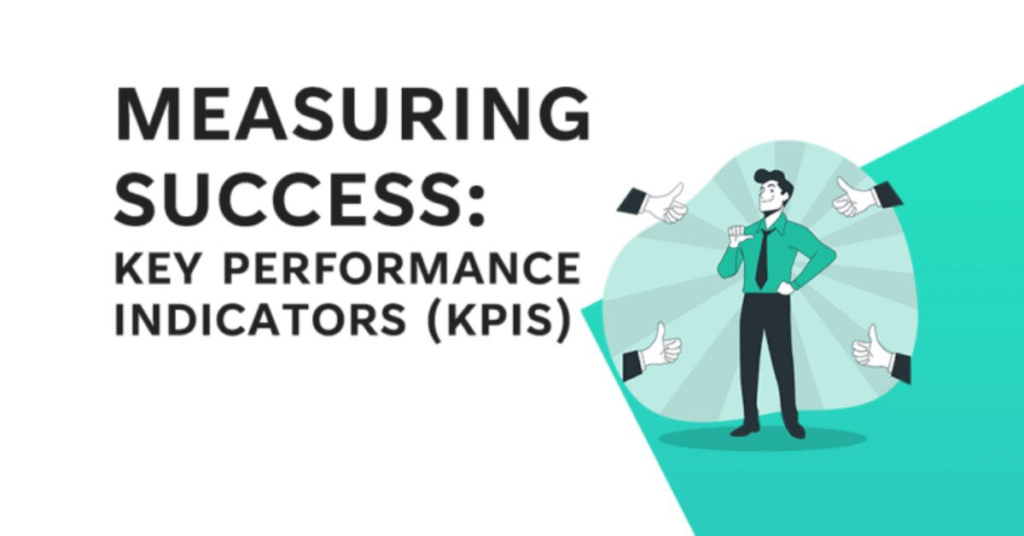
SEO is kinda tricky. You put in hours of work, write blogs, fix pages, maybe even pay an agency… but still keep asking yourself: “Is this even working?” That’s the most common doubt everyone has.
In this article, I’m gonna explain those signs in plain words, no over-complicated stuff so you can figure out if your SEO is actually going in the right direction or if you need to change the plan.
What Is a Key Performance Indicator (KPI) in SEO?
A lot of people hear the word “KPI” and think it’s something too technical. In reality, it’s just a way of saying “the numbers that matter.” KPIs are the signals you can track to measure growth.
Think of it like a student checking exam results. If marks are going up, you know you studied better. Same with SEO if your traffic, leads, and rankings are improving, then it means you are moving in the right direction. Without KPIs, you are only guessing.
Key SEO KPIs to Measure Success

Website Traffic and Impressions
The very first thing everyone looks at is traffic. If more people are coming to your site through Google searches, that’s a good sign. Impressions (the number of times your site appears in search results) are also important. Even if people don’t click, it shows that Google is starting to notice your site.
Number of Ranking Keywords
Another sign is when your website starts ranking for more keywords than before. For example, if in January you ranked for 20 keywords and now in June it’s 100+, then clearly SEO is working. More keywords mean more visibility and a higher chance of getting clicks.
Branded Search Volume
If people type your brand name directly into Google, it means you’re getting attention. Maybe through social media, word of mouth, or ads, but SEO plays a role too. This shows your brand is getting recognized.
Domain Authority Growth
Domain Authority (DA) is a score out of 100 that shows how trustworthy your site is. Higher DA usually means Google trusts your content more. When backlinks from good websites point to you, DA grows. And that is a solid signal of SEO progress.
Conversions and Leads
Traffic alone is useless if people don’t take action. The true test of SEO is: are visitors signing up, filling forms, calling you, or buying something? If yes, then SEO is really working, not just bringing random traffic.
Revenue
At the end of the day, money talks. If sales and revenue from organic traffic are rising, that’s the ultimate proof that your SEO strategy is successful.
Signs Your SEO Strategy Is Working
- Organic traffic is going up (slowly but surely)
- Your important keywords are climbing in rankings
- Conversions are increasing (not just visitors, but paying customers)
- People spend more time on your site (not bouncing off in 3 seconds)
- You are getting backlinks from good websites
These small wins together prove SEO is paying off.
On-Page SEO: The Foundation of Results
Why On-Page SEO Matters
On-page SEO is like the basics of a website. If the basics are weak, no matter how much effort you put in ads or backlinks, your site won’t perform well. It’s the same as building a house without a strong base. It might look fine at first, but it won’t stay strong for long.
Many people run behind off-page things like backlinks or paid promotions, but if your own website isn’t set properly, those things don’t give results. On-page SEO is about very simple stuff like writing clear titles, putting the right keywords, using headings properly, and making sure your site opens fast on both computers and mobile devices. So before running behind big SEO tricks, you should fix your on-page. It’s the first step, and without it, all other SEO efforts are kind of wasted.
Key of On-Page SEO Techniques
Then comes keywords, you don’t need to stuff them everywhere, but placing them naturally in titles, headings, and the content makes a big difference.
- Use short, clear URLs
- Place keywords naturally, not forcefully
- Add both internal and external links
- Compress and optimize images
- Keep the site mobile-friendly and fast
The Role of H1 Headings in SEO
What Is an H1 Tag?
H1 is simply the main headline of a page. A page is a book, H1 is the chapter title.
Best Practices for H1 Tags
- Only one H1 per page
- Keep it short and clear
- Add your main keyword
- Make sure it matches the page content
Choosing the Right KPIs for Your Business
Not every business should chase the same numbers. A clothing store will care about conversions and sales. A blog might only care about traffic and engagement. The smart move is to pick KPIs that match your business goals instead of blindly copying others.
What to Ask Your SEO Agency
- What KPIs are you tracking?
- How often will you send reports?
- Which tools do you use?
- How will you connect results to my actual business growth?
This way, you’ll know if your money is being used properly.
Conclusion
Same with SEO. If your traffic is slowly rising, your keywords are showing up more, people are actually staying on your site, and some of them are even buying or signing up, then yes, your SEO is working. Don’t stress too much on daily numbers; focus on the bigger picture.
FAQs
How long does SEO take to show results?
Sometimes less, sometimes more, depending on how strong your work is.
What’s the first sign my SEO is working?
Your traffic grows slowly, and your keywords start moving up in Google.
Does SEO bring sales or only visitors?
Good SEO should bring both. If it only gives visitors but no sales, something is missing.
How can I track my SEO progress?
Use Google Analytics and Google Search Console. Both are free and easy to use.
What if I see no results after months?
Then your strategy might be wrong. Check your keywords, content quality, and backlinks.




